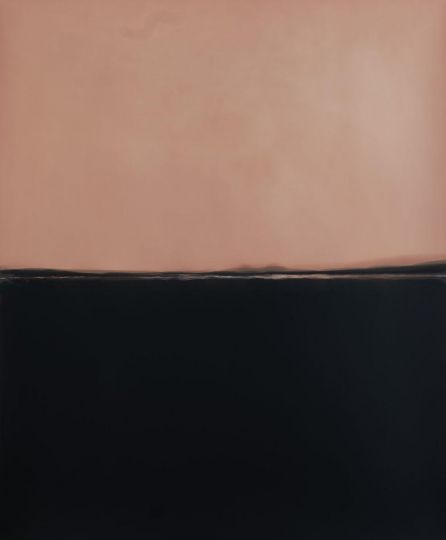To quote those oft-repeated opening lines of Tolstoy’s Anna Karenina: “Happy families are all alike; every unhappy family is unhappy in its own way.” And so it was with my family, sparse as it was without siblings. Happy or not, the impulse to record is as immutable as the will to remember. So, these 15 images exist as an alternative family archive. They present, or rather re-present, my dead mother and dead father in a fusion of time, place, and memory.
To use Charlotte Delbo’s words, I am unsure if these images are true. But I am sure that they are truthful.
I sometimes say that I started at the end. That’s because the first image—completed in 2011— show my mother, Frances, in death. The image 97532, no. 1—the title comes from the number of her death certificate—is based on a photo I took two hours after she died. For the the eight
pictures that follow I lurched into the past, constructing them from old photographs I found after her death, small pictures stuffed into shoeboxes and tattered albums. Those photos show Frances as a young woman, years before I was born. I used them as the foundations into which I would interweave the elements that defined her life as I knew it, elements I drew out of the history we shared, and the life, and death, she transmitted to me. These include references to the Holocaust, which imprinted on her life as it would on mine, a dark generational legacy. There are markers of the acute progressive dementia she endured for over fifteen years, her life’s lengthy final chapter. There are also literary references (“you must console me,” a line from Alexander Döblin’s Berlin Alexanderplatz that, when I read it for the first time, sounded as if they had been crafted from my mother’s desperate lips), text from her death certificate, and words put together from my own shambolic thoughts about her stormy life that included a sharp mind infected by mental illness and addiction.
The six images that follow are based on my father, Joseph. I also used old photographs for these works, photos that show him at ages ranging from three years old, posing next to a teddy bear in a 1920s photography studio, to age 88, less than an hour after his death. The texts that appears in each image except the last are from his final words. Dying and unable to speak, he scribbled them in shaky hand on a pad of paper. They are physical remnants of the banal, the metaphysical, and the arcane:
It’s all over
I wanted to see who can be trusted? Did I fall?
I am not ready to go
What did he mean exactly? Some of the meanings seem reasonably straightforward coming from a man who sequestered himself from intimacy, a man who knew he was dying but wouldn’t accept it. Others — Did I fall? — might have been literal, or, less characteristically (impending death has a way of dredging the uncharacteristic), a pondering on the arc of his soon-to-end life and, perhaps, a call for reassurance. A haze of drugs and illness prevented any conversation that could clarify. And those words I wanted to see. Of course — but see what?
A difficult person to know, my father. (Yes, I know: so is everyone. But not equally so.) He remained opaque to me right up to the end where, in that final image — Joseph (2004/09/26/00/15) — he seems to be brutally discharging the last bit of life inside him.
When I laid out the photographs of Joseph at the ages of three years old, twelve, nineteen, 30, 43, and finally, in death, against those few pages of notes with his last days’ scrawl, I thought: what a long road we travel to the only part of the human story that never changes — the very end.
Of course, one can hazard only a tremulous guess at knowing anyone, including one’s parents. Especially one’s parents. Which leads me, and leaves me, here. Constructing these images forced me to a clarity, almost visceral, a clarity I resisted. They forced me to see that only at the price of self-deception and betrayal could I separate these pictures I made from who I am, who’ve I’ve become, and who I’ve been. The cliché returned home, and, appropriately enough, with a vengeance,: these portraits are self-portraits. Individually and in concert, they are pictures of my parents, pictures of me, pictures of us together, entwined in that sad and harrowing way we lived, and died. If they look hallucinatory, then they exist for me as the hallucinations Céline spoke of: hallucinations more real than everyday life, both curling and dissipating through mind and memory like smoke.
Frank Rodick
















